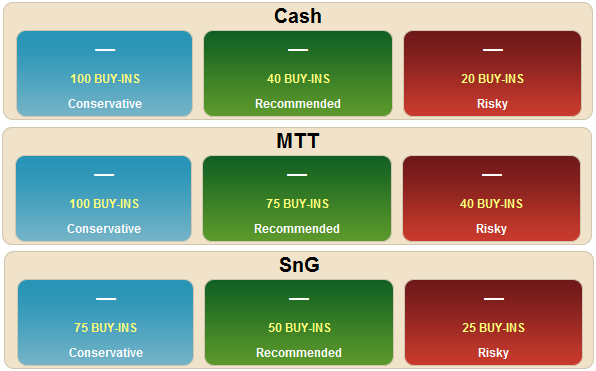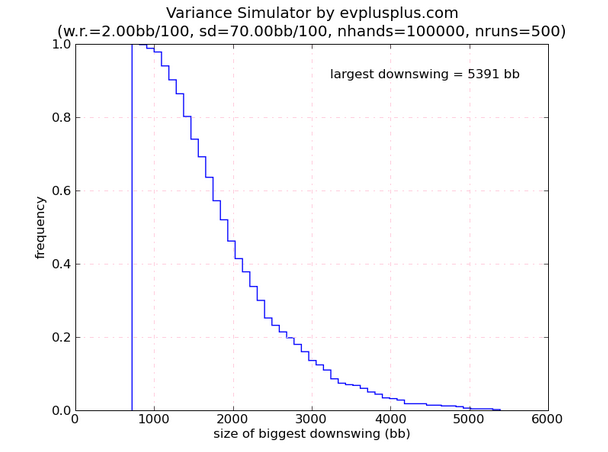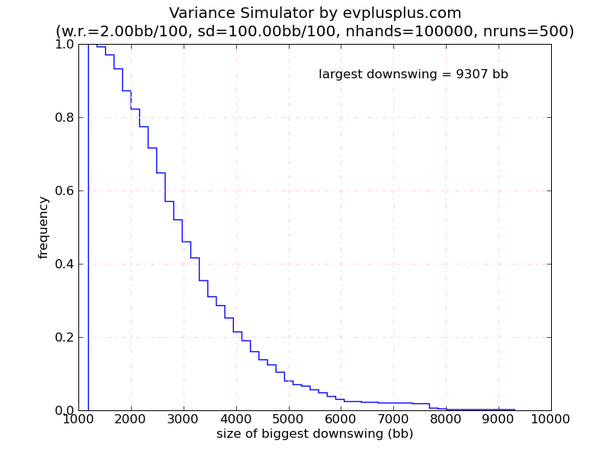Barnkroll management is a very important concept for poker players to understand. The nature of poker is that it is a game of ups and downs, and managing your money in such a way that you can handle the natural variance of the game is essential if you want to maintain a poker bankroll. There’s no doubt that there are players who have the same technical ability as Daniel Negreanu or Tom Dwan out there, but they never made it to the top because they were poor money managers.
Most casual online poker players will make an occasional deposit, buy into a tournament or cash game for the full amount and then leave when they lose it, or maybe buy into a bigger game if they go on a winning streak. Playing in this manner is a sure-fire way to lose every time. Though it isn’t glamorous and it removes the possibility of having a big spin-up, proper bankroll management is the only way to ensure that you don’t have to deposit time after time.
Managing your bankroll well involves understanding the swings in the game which you want to play, and only putting a small fraction of your bankroll at risk at any one table at a time.
Why is Bankroll Management Necessary?
All poker variants come with winning and losing streaks. One of the things that makes poker profitable is that poor players keep coming back because they think they have just been unlucky, and that their perceived skill will shine through when their luck evens out. If you are by far the best player in the games which you’re playing in, you’ll still have days, week or evens months where you can’t win and this is why having a bankroll which can absorb the losses and breakeven stretches is essential. If you’re a sit and go player, you might play perfectly and go on a huge run where you don’t make the money purely due to losing a lot of coinflips at critical stages. If you’re a cash game player, you might run KK into AA or an overpair into a set many more times than vice versa over the course of a month, and these completely unavoidable situations will cost you a full buy-in each time.
As online poker has become more difficult over the years, edges have shrunk and variance has skyrocketed and bankroll requirements have become even stricter than they were back in the early days of online poker.
The table below shows the suggested bankroll requirements for online no limit holdem cash game, multi table tournaments and sit n gos. The great thing about online poker is that even if you only have $50 to deposit, you can play low enough stakes that allow you to exercise proper bankroll management.

From: http://www.flopturnriver.com/Bankroll-Management-101.html
Bankrolls for Shorthanded Cash Games
Online cash games have become very aggressive in recent years, with people more than willing to bluff off full stacks without batting an eyelid and in fact such play is necessary if you want to be a winning player in today’s games. The result of the aggressive nature of the play is that the variance in online cash games has increased dramatically. The expected swings can be calculated from looking at your standard deviation per 100 hands, which is a measure of how smooth your winrate graph is. Very aggressive players will have standard deviations of 100 big blinds per 100 hands, meaning they’ll regularly be up or down a buy-in even over such a small sample. Tighter, less aggressive players will find their standard deviation closer to 70 big blinds per 100 hands. If we simulate the results for both players at www.evplusplus.com, we get the following graphs which show how big of a downswing each player can expect over a typical 100,000 hand sample, assuming they’re both winning players at a rate of 2 big blinds per 100 hands.


We can see that 50% of the time over a 100k hand sample the very tight player will have a 20 buy-in downswing, assuming players buy in for the standard 100 big blinds. The loose-aggressive player on the other hand can expect to have a 30 buy-in downswing. Note also the difference between the worst-case-scenario largest downswing in the simulation: 54 buy-ins for the tight player and 93 for the loose player! Hopefully this will make you see just how important keeping a bankroll of more than 30 buy-ins is, and how important it is to move down when you go below this.
Bankroll Management for Sit n Go and Multi Table Tournaments
It’s a little bit more difficult to put an exact figure on the number of buyins required for sit and go’s and MTTs. Nowadays there are such a wide variety of structures and field sizes that no one size fits all bankroll calculation is available. Some players play regular speed single table tournaments, while others play 180 man hyper-turbos and others might specialise in 5,000 runners MTTs. The nature of the payout structure has a big affect on deciding what an appropriate bankroll is. For example if you specialise in huge field MTTs where only the final table pays big money, then it could take you hundreds of tournaments before you net a big score, and if you play turbo sit and goes where you find yourself relying on grinding out an optimal push-fold strategy you’re also going to experience huge swings. As a very general rule of thumb however, medium sized MTT players should stick with a bankroll of 75 buy-ins, and small field, regular speed sit and go players can work of a 50 buy-in bankroll. All of these recommendations however, come with a caveat that you absolutely must move down to lower buy-in tournaments when a downswing brings you below these numbers.
Bankroll Management for Heads Up Poker
Heads up poker is a different beast when it comes to bankroll management. Both cash game and heads up sit n go players experience obscene variance due to the aggressive play necessary to grind down opponents. Heads up cash game specialists typically experience variance in excess of 150 big blinds per 100 hands. In any given 100k hand sample, this means they have a 50% chance of a 40 buyin downswing, even as a 2 bb/100 winner, and the worst case scenario is a bankroll busting 176 buy-in downswing. As you can see, heads up cash games aren’t for the feint hearted When it comes to heads-up sit and goes, it’s quite common to lose up to 10 in a row, and a 30-40 buy-in downswing overall is not unheard of. This is very small in comparison with what heads up cash game players experience, but a bankroll in excess of 50 buy-ins for your chosen level is recommended.
Moving Up and Down Levels and Taking Shots
If you apply strict bankroll management, you should never go broke. Part of this plan involves moving down levels if you hit a significant downswing and have dropped below the necessary bankroll for the level you’re at. Dropping down levels happens to all poker players at some time or another. A good system to follow when taking shots at a higher level would be to give yourself, for example, a 5 buy-in try out at the new level. Imagine you’re playing $50nl and have a bankroll of $2,500. You decide that you’re playing well and think you could beat $100nl, so you decide to try out a 5 buyin shot. In this instance, if you get off to a losing start and drop back to $2,000, you should stop playing $100nl and move down until you’ve rebuilt your bankroll. You should be willing do drop down even if you’ve been a regular at a certain level for a long time. For example if you had a $5,000 bankroll for 100nl and went on a huge downswing and lost $2,000, it would be time to think about moving down levels. A good rule of thumb for casual cash game players would be to move up levels when they reach 30 buy-ins for the new level, but back down again if they drop to 25.
Usually, you’re better off sticking to playing at one level at a time. Some players, when moving up, will play a few tables at the lower stake, and a few at the higher stakes but this ends up with them being off balance, playing too tight and scared at the higher tables, while not caring enough about the small pots at the lower stakes table. It’s recommended that you either play one or the other, and give them your full attention.







